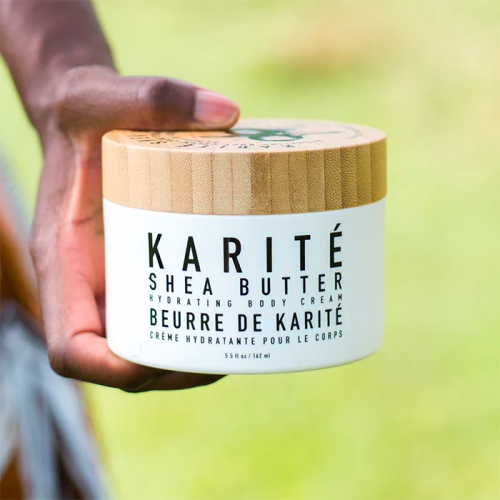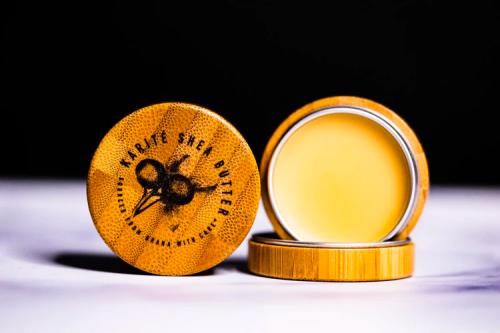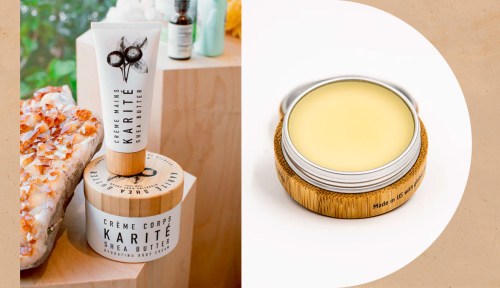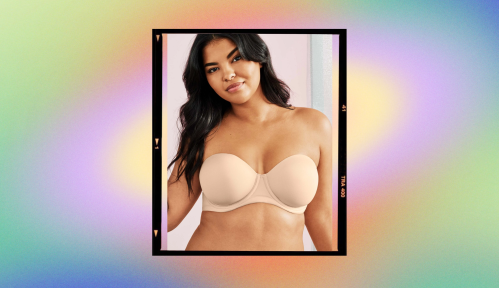Our editors independently select these products. Making a purchase through our links may earn Well+Good a commission
Having dry, sensitive skin can be a pain year-round, but it’s especially hard in the winter. No matter what I did, I just couldn’t find a product that helped calm my skin down and give it the moisture it so desperately needed. In fact, even the most expensive body oils didn’t work, and trust me: I tried a lot of them. Drugstore moisturizers were unfortunately filled with tons of fillers that made me red and splotchy (the pains of having sensitive skin, y’all), and the few luxe creams that actually worked got used up so quickly, I couldn’t justify the cost any longer (they required way more product per application than I had expected in order to provide results).
It’s also worth noting that being Indian, I have more melanin in my skin. It’s been scientifically determined that those with darker skin may suffer from greater transepidermal water loss (lost moisture from the skin), when compared to white or Caucasian skin. So I wasn’t imagining it: My skin was getting super dry, super fast, and it often developed white, scaly patches because of this. I was sick of buying expensive creams, and I really wanted to find something that was made for my skin tone in mind. Enter: Karité.
Founded in 2017 by three sisters from Ghana, West Africa, Karité is a beauty company that specializes in shea butter moisturizers, which is a cultural staple in the region. “When we were younger, our parents, grandparents—all of them—used to have vast tubs of shea butter just sitting in the bathroom, and we’d use it on our skin every single day,” says Akua Okunseinde, Chief Creative Officer and co-founder of Karité. “Shea butter is not only rich in antioxidants and Vitamin E, but it also helps protect the skin barrier from dry air and inflammation.” Studies have even suggested that shea butter can be used in wound healing and for fighting eczema, as well as helping to slow down the body’s reaction to aging.
Shea butter is extracted from the nut of the African shea tree, and is usually a very thick substance that’s actually pretty hard to spread on the body, despite its many benefits, explains Okunseinde. That’s why the company incorporates a bunch of other ingredients into their products to help add to the spreadability and moisturizing benefits—and the person who formulates these concoctions is none other than one of the brand’s co-founders, who is also a board-certified dermatologist.
“Our sister, Dr. Naana Boakye, MD, is the brain behind the formulations of all three of our products: the Crème Corps Hydrating Body Cream ($46), the Crème Mains Nourishing Hand Cream ($36), and the Baume à Lèvres Nourishing Lip Balm ($25),” says Okunseinde. “She makes sure that the ingredients have been sourced sustainably, and that they’re all as natural as possible without taking away from the effectiveness of the cream.” I personally used the Body Cream all over, and found that it included other really great moisture-rich ingredients like coconut oil and rosemary leaf extract for an added glow.

Crème Corps Hydrating Body Cream — $46.00

Crème Mains Nourishing Hand Cream — $36.00

Baume à Lèvres Nourishing Lip Balm — $25.00
While even Karité’s shea butter is generally quite thick to use, it goes on pretty easily if you follow the instructions on the tub. The brand recommends using it when you just get out of the shower, as the skin is still damp, and therefore absorbs the cream a lot better. Abena Slowe, Karité co-founder and Chief Operating Officer, also suggests initially rubbing the butter between your palms to warm it up before applying, since that can also help it spread across the body with more ease. “I also wouldn’t worry about putting too much on,” she says. “Since shea butter is non-comedogenic, it doesn’t clog pores, and so, it can also be used on acne-prone skin.”
While my skin is more dry and sensitive (I only break out around my period), I have to say that using Karité’s shea butter Crème Corps Hydrating Body Cream helped my skin better than anything else I’ve ever tried. After using it daily for about a week, I found that my dryness and cracked heels and elbows completely subsided, and my skin was left with a luminous ‘glow’ that I really had never managed to find elsewhere. Not only was my skin soft, supple, and moisturized, but its texture was more smooth—a direct byproduct of shea butter’s high vitamin E content, according to Dr. Erum Ilyas, a board-certified dermatologist with Schweiger Dermatology Group.
“Shea butter has high concentrations of both vitamin C and vitamin A (a type of retinol),” she explains. “When vitamin E is applied topically, it can penetrate the skin effectively as a fat-soluble product. It helps the skin become more hydrated, and it’s also been used to manage scars and burns, given its ability to help soothe the skin.” Alternatively, the vitamin A content in shea butter “boosts collagen production, hydrates the skin, and also improves skin discoloration,” she adds.
It’s important to note, however, that when you use shea butter, you need to be sure it’s being sourced correctly: About 80 percent of the world’s shea butter comes from West Africa, and is picked by women co-ops—so making sure that it’s been sourced sustainably and under fair conditions is key.
Slowe says that at Karité, not only are the women paid fair wages, but the company also gives back in various ways, most recently by donating 100 pairs of sneakers to protect the women’s feet in harsh weather conditions. “It’s important for us to give back to where we came from,” stresses Slowe. The Crème Corps Hydrating Body Cream therefore not only works incredibly well, especially for the price, but also aims to help communities that need it the most—making it an ultimate winner in my book.
Sign up for the Well+Good SHOP Newsletter
Get exclusive deals on wellness, beauty, fitness, and food products that have been hand-picked by our editors.
Got it, you've been added to our email list.











